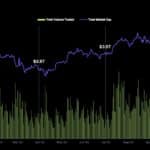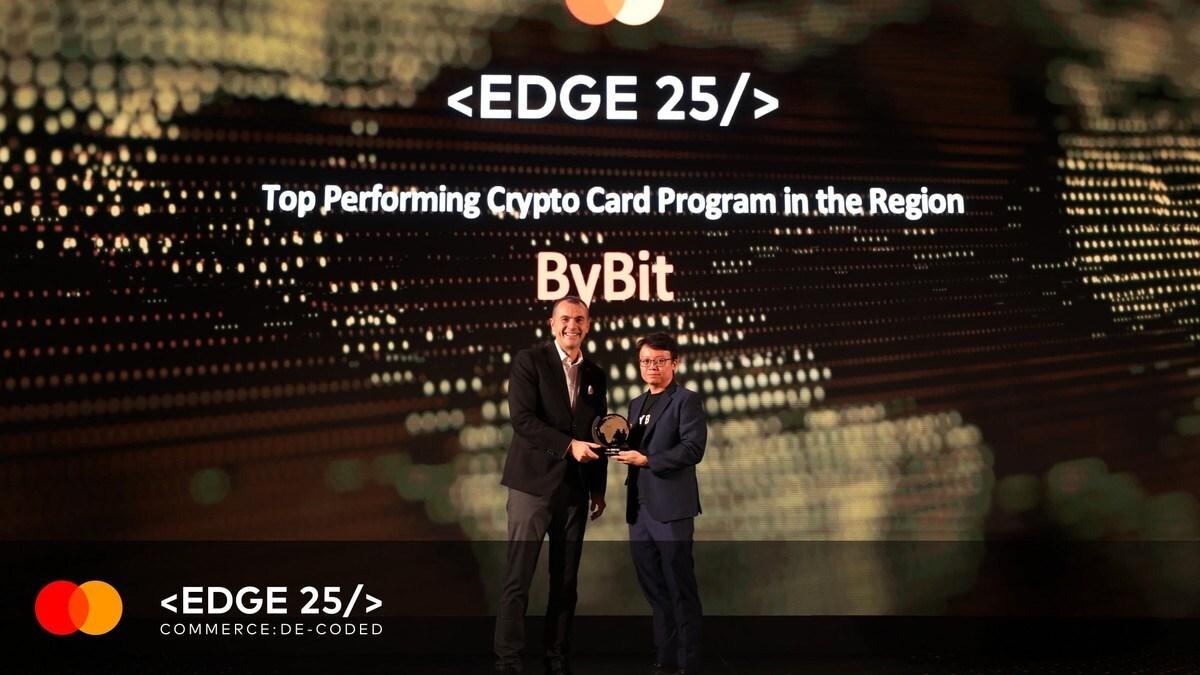Today, we’re breaking down CoinGecko’s 2025 Q1 Crypto Industry Report and summarizing its key insights for 99Bitcoins readers. The third quarter of 2025 marked a turning point for the crypto market, becoming a period of stabilization, maturity, and cautious optimism. After the volatility of early 2025, digital assets found firmer ground, with Bitcoin (BTC) hovering close to all-time-high territory, Ethereum (ETC) strengthening its ecosystem through liquid staking and real-world asset (RWA) integration, and selected altcoins proving that fundamentals are back in focus. According to CoinGecko’s Q3 2025 Crypto Industry Report, the total crypto market capitalization fluctuated between $2.5 trillion and $2.9 trillion, signaling steady consolidation after earlier peaks and pullbacks. Institutional participation continued to rise, ETF inflows leveled off rather than reversed, and developers continued to build, especially across DeFi, tokenization, and gaming. Let’s break down what these trends reveal about where the market stands today and what might be coming next! Crypto Market Analysis Q3 2025: Summary The third quarter of 2025 brought a mix of consolidation, cautious optimism, and emerging opportunities across the crypto industry. While Bitcoin continued to hold its ground after a volatile first half of the year, Ethereum and several altcoin sectors showed resilience amid shifting investor sentiment. According to CoinGecko’s Q3 2025 Crypto Industry Report, the total market capitalization fluctuated between $2.5 trillion and $2.9 trillion, reflecting a period of relative stability after earlier highs and corrections. Key Takeaways BTC traded mostly between $68K–$70K as long-term holders locked away supply and ETF inflows stabilized, signaling a more mature, institution-driven market. ETH staking surpassed the mark of 32 million, while renewed decentralized finance (DeFi) and RWA activity pushed average gas fees higher but underscored growing on-chain utility. Solana, Avalanche, and Base benefited from ecosystem expansion, while speculative meme tokens like DOGE and PEPE cooled, contributing under 2% of total volume. Liquid staking and tokenized treasuries pushed DeFi TVL to about $115 billion, with Base emerging as a serious Layer-2 contender. Trading volume rose 12% quarter-over-quarter as developers shifted from hype-driven drops to utility-based NFTs and cross-platform integration. Binance retained a ~45% market share but faced headwinds, while Coinbase grew through ETF exposure and derivatives; decentralized exchanges captured 22% of total trading, their strongest share since 2022. Crypto fundamentals, liquidity, and institutional engagement are strengthening, setting the stage for Q4 catalysts like ETF inflows, RWA tokenization, and macro policy shifts. Total Crypto Market Capitalization in Q3 2025 Q3 2025 is in the books, but why is analyzing it important? Because understanding how the market evolved this quarter can help you navigate what comes next. From shifting capital flows to changing investor behavior, the trends bring to the surface where the market’s strength and potential risks may lie heading into the next quarter. The broader crypto market entered Q3 2025 with renewed momentum, and the data show it clearly: total market capitalization rose by around +16.4% (ca. $563.6 billion) to finish the quarter at about $4.0 trillion, taking the industry back to levels last seen in late 2021. Source: CoinGecko That growth comes with nuances. While price action played a role, the uptick in average daily trading volume (up to ~$155 billion, +43.8% QoQ) signals that participation is ramping back up after weakness earlier in the year. At the same time, the market’s volatility has dampened: annualized volatility for the total crypto cap fell from ~44.6% in Q2 to ~35.6% in Q3, suggesting that as the market matures, we will be seeing less extreme swings. Crucially, the structure of where the money went is shifting. Although the headline figure is a big rebound, beneath the surface, we’re seeing, for example, stablecoins and decentralized finance (DeFi) reclaiming share, and altcoins carving out selective hot spots rather than broad-based rallies. That means the total market cap number is useful as a macro signpost, but the real story lies in how that value is distributed and deployed. This is something that investors and analysts should watch closely. Bitcoin, Altcoins & Stablecoins: Q3 2025 Performance Review Clearly, the broader crypto market is back on the move, but in Q3 2025, each major asset class told a different story. Bitcoin offered relative stability amid shifting tides, the large-cap altcoin segment surged into the selective spotlight, whilst USDC, USDT, and other stablecoins quietly set new records. To offer a quick recap, while the total market cap climbed, the spotlight moved away from broad-based rallies and toward nuanced rotations, which can be considered a clear sign of the maturing investment landscape. Source: CoinGecko Bitcoin held steady as the market’s anchor in Q3, trading mostly between $68,000 and $70,000 after briefly dipping below $65,000. However, mid-quarter it flashed its strength by setting a new all-time high (ATH) of around $123,500, before retracing to more stable levels. This brief surge underscored Bitcoin’s continued dominance and the market’s sensitivity to institutional flows. Despite the later cooldown, its modest quarterly gains reflected a maturing phase rather than weakness: volatility eased, and long-term holders kept accumulating, with over 70% of supply inactive for more than a year. The combination of tightening liquidity, steady ETF inflows, and reduced miner selling reinforced Bitcoin’s role as crypto’s safe harbor amid shifting market dynamics. With institutions now accumulating instead of speculating, Bitcoin appears to be entering a consolidation phase where endurance and conviction matter more than breakout moves. Ethereum maintained its position as the leading smart contract platform, supported by renewed activity in DeFi and tokenized real-world assets. However, the report noted a modest increase in average gas fees due to heightened activity around liquid staking and Layer-2 (L2) settlements. ETH’s price hovered between $3,300 and $3,800 during Q3, with staking participation surpassing 32 million ETH. This record high reflects growing network trust. Altcoin performance diverged sharply in Q3. Blue-chip networks like Solana and Avalanche benefited from institutional interest in tokenized assets and gaming, while many smaller projects underperformed. The memecoin trend, led by tokens like PEPE and DOGE, cooled significantly, contributing less than 2% to total trading volumes. Investors mostly favored projects with tangible use cases and ecosystem growth potential. Cryptocurrency Approx. Q3 2025 Return Key Highlights Bitcoin (BTC) ~ +6.4% Relatively modest growth, reinforcing its stability anchor role; market dominance remains high Ethereum (ETH) ~ +68.5% Outperformed major peers, hit a new ATH (~$4,946) before settling around ~$4,215 BNB ~ +57.3% Strong quarter, reached fresh highs (~$1,030); growth reflecting ecosystem momentum and exchange-token synergy Solana (SOL) ~ +34.7% Solid double-digit gain, with network activity and ecosystem interest rising, yet less explosive than ETH/BNB Did you know stablecoins quietly stole part of the spotlight in Q3? The top 20 stablecoins saw $44.5 billion of net inflows in the quarter, pushing the market cap to a new all-time high (ATH) of $287.6 billion (and crossing $300B in early Q4). The report stated, Stablecoin market cap surged by a record +$44.5B in Q3 to reach $287.6, driven by explosive growth in USDe and USDC. Fiat-backed coins such as USDC and newer entrants like USDe led the gains, reinforcing stablecoins’ role as the primary on- and off-ramp for traders, a liquidity buffer for DeFi, and a workhorse for settlement and yields. That growth underlines how much of the market’s short-term capital now lives in stablecoins, useful for reducing volatility exposure, but also raising questions about concentration, reserve transparency, and evolving regulatory scrutiny as stablecoins become more systemically important. DeFi: Liquid Staking and RWAs Lead Growth They said decentralized finance (DeFi) was resting, but in Q3 2025, it woke up with a slow stretch. While mainstream assets grabbed headlines, the under-the-radar gears of DeFi were quietly reinvigorating, moving beyond hype, and rebuilding on fundamentals and new use-cases. The DeFi ecosystem saw a robust revival in Q3, with Total Value Locked (TVL) climbing +40.2% from about $115 billion at the start of the quarter to $161 billion by the end of September. Source: CoinGecko This surge was underpinned by structural shifts: liquid staking and RWA tokenization gained serious traction. For example, lending and staking platforms grew respectively +55.0% and +67.2% QoQ, driven in part by ETH’s strong performance and growing demand for yield. RWA protocols alone saw TVL rise from $12.7 billion in Q2 to $15.9 billion in Q3—up +25.2%. On the network front, Ethereum pulled ahead, expanding its TVL share from 60.9% to 62.1%, while emerging chains like Plasma added $5.5 billion in TVL in one quarter, showing how L2s and alternative ecosystems are increasingly important. Also notable: basis-trading protocols that are often tied to stablecoin mechanics exploded by +149.4% QoQ, pointing to how the stablecoin and DeFi markets are becoming more intertwined. NFTs and Gaming: Gradual Rebound Remember when non-fungible tokens (NFTs) and play-to-earn (P2E) games were everyone’s favorite dinner topic? Well, they’re not quite back at that level yet, but in Q3 2025, the space showed a flicker of that old spark. NFT trading volumes climbed about 12% from Q2 levels as top NFT marketplaces like Blur and OpenSea reignited incentive programs, drawing traders and creators back into the fold. NFT lending platforms posted an even stronger comeback, with loan volumes up 148.2% QoQ, hinting that the market is shifting toward utility-backed use cases and more sophisticated financialization. Source: CoinGecko Gaming tokens, meanwhile, gained moderate traction on networks like Immutable and Ronin, supported by developers focusing on cross-platform integration, user ownership, and sustainable reward mechanics rather than one-off speculative drops. The tone has changed, with the industry gradually maturing and trading hype cycles for steady world-building, even though activity is still far from the dizzying highs of 2021. Could it be a quieter kind of comeback that might finally last? Exchanges and Trading: Volume Shifts and Regulatory Pressure Trading floors were yet again buzzing across the crypto world in Q3. As volumes surged, regulatory winds shifted, and the spotlight moved from centralized giants to their decentralized challengers, the exchange landscape reminded us that when crypto evolves, so does how and where we trade. Spot trading volume on major centralized exchanges (CEXs) climbed 31.6% quarter-on-quarter, jumping from about $3.9 trillion in Q2 to roughly $5.1 trillion in Q3. Binance remained the clear leader with over $2 trillion in quarterly trades and around 40–45% market share, though ongoing regulatory headwinds in the EU and Asia chipped away at its dominance. Coinbase, on the other hand, benefited from derivatives adoption and strong U.S. ETF inflows, cementing its role as the preferred exchange for institutional capital. Source: CoinGecko Here’s a snapshot of the quarter’s trading dynamics: Spot Trading (CEX): $5.1 trillion total volume (+31.6% QoQ) Binance: ~$2 trillion volume, ~40–45% market share (slight decline) DEXs’ Market Share: Climbed to 22%+, the highest since early 2022 Perpetual DEX Volume: Record $1.8 trillion (+87% QoQ) Top Gainers: Bybit, OKX, and Coinbase, driven by derivatives and ETF flows Meanwhile, decentralized exchanges (DEXs) continued to eat into centralized dominance, driven by traders seeking non-custodial safety, protocol incentives, and lower barriers to entry. The strong rebound in perpetual DEX volume underlines how quickly traders are adapting to the new liquidity landscape. Overall, Q3 2025 demonstrated that crypto trading is changing simultaneously on two fronts, with DEXs thriving on innovation and CEXs adapting to stricter regulations. It serves as a reminder to investors that the next big thing in crypto may not be what is being traded, but rather where it’s being traded. Big Influences Shaping the Crypto Landscape in Q3 2025 As we’re nearing the end of our analysis, let’s take a step back and look at the bigger picture. Behind the charts and price fluctuations, Q3 2025 revealed the real forces driving crypto growth. From major institutional moves to a stronger DeFi comeback and the expanding role of stablecoins, the quarter showed that the market is developing and maturing. Institutions Are Here to Stay In Q3, institutional players kept building positions through Bitcoin and Ethereum ETFs, while average daily trading volume climbed above $150 billion. Rather than chasing short-term gains, funds and companies are treating crypto like a long-term asset class. Thus, the current market’s staying power can be attributed to the transition from speculation to strategy. Stablecoins Take the Spotlight The quarter’s silent winners were stablecoins. The total market cap increased by around 18%, to approximately $288 billion. Stablecoins are now the foundation of on-chain operations, enabling everything from payments and settlements to driving DeFi’s liquidity engines. To put it briefly, they are now the closest link between the cryptocurrency sector and the actual economy. DeFi Finds Its Footing Again DeFi recovered from months of sideways movement and did it well. TVL jumped by over 40%, thanks to liquid staking and tokenized RWAs. Networks like Ethereum, Solana, and Base saw the most traction, indicating that DeFi is shifting toward practical, yield-driven innovation. Exchanges Face Pressure But Keep Adapting The trading scene is rapidly changing. Despite greater regulatory obstacles, particularly in the EU and Asia, CEXs managed to hold their foothold. Meanwhile, DEXs have reached their highest market share since 2022, driven by traders seeking transparency and self-custody. The lesson learned? Users are literally voting with their wallets, and crypto trading is growing more diverse than ever. Beyond Bitcoin: Capital Finds New Paths Although Bitcoin remained the market leader, investors began to spread their bets. Solana, BNB, and Ethereum all beat the broader market, indicating a more complex and well-balanced environment. The next wave of growth, propelled by innovation, may be influenced by this trend toward diversification. Conclusion The Q3 2025 data suggest that crypto markets are entering a consolidation phase marked by selective growth, stronger fundamentals, and a reduced influence of short-term speculation. Bitcoin’s stability, Ethereum’s expanding staking base, and DeFi’s focus on real-world utility all point to a market that is becoming more institutionalized and efficient. As Q4 approaches, the key catalysts to watch include macroeconomic policy shifts, Bitcoin ETF inflows, and the accelerating tokenization of traditional assets. See also: Fastest Growing Cryptocurrencies to Watch in 2025 Best Crypto Wallets For Trading in 2025 The post CoinGecko Q3 Crypto Market Report: Key Trends for Bitcoin, Eth, & DeFi appeared first on 99Bitcoins.

More Headlines
[LIVE] Crypto News Today, November 3 – Why Is Crypto Crashing Again? BTC Price USD Defends $107K as Balancer Is Being Exploited for Over $70M – Best Crypto to Buy
99bitcoins

Google’s Gemini AI Predicts the Price of XRP, Cardano, Aster by the End of 2025
CryptoNews.com

Bybit Card Honored as “the Best Performing Crypto Card” by Mastercard at EDGE 2025
TheBitCoinNews

Macro Factors, Spot ETFs, and the New Bitcoin Price Roadmap
BeInCrypto

Best Crypto to Buy Now 3 November – XRP, Solana, Dogecoin
CryptoNews.com

Nasdaq Reprimands TON Strategy Over $272M Toncoin Purchase
CryptoNews.com
